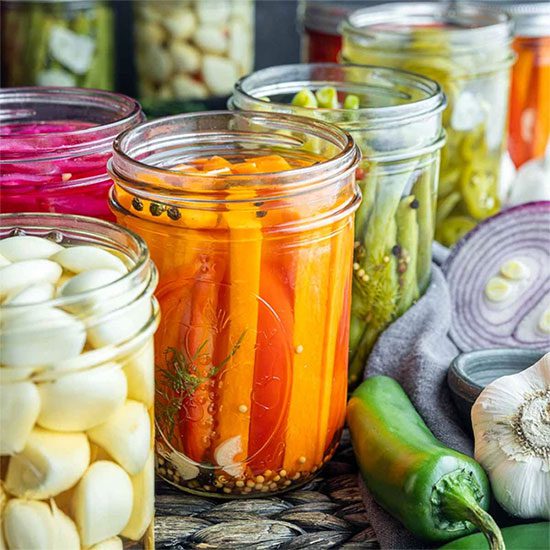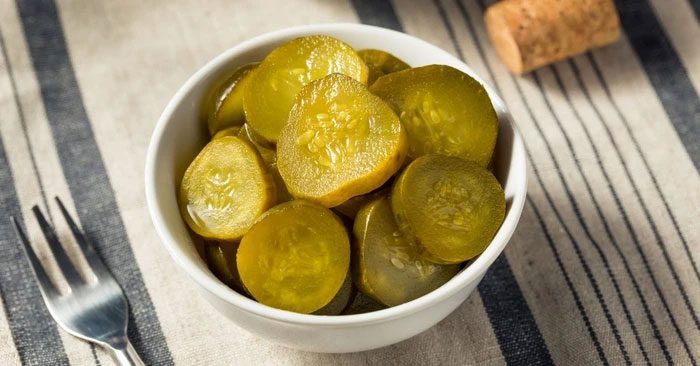After the trend of bacon and Ranch salad dressing, a pickle craze is sweeping across the United States. Pickles have become so popular that “unique” snacks such as pickle-flavored popcorn, gum, and seasoned nuts have emerged.
Now, pickle enthusiasts can order a pickle pizza, enjoy it with pickle-flavored fries, and wash it down with a glass of pickle-flavored beer.
If you’re looking for dessert, there are also options like pickle cotton candy, pickle ice cream, and pickle-flavored gummies available. You can even visit the Sonic Drive-In fast-food chain to order a pickle juice slush.
In the U.S., the primary ingredient for making pickles is cucumbers, but they can be substituted with any fruits or vegetables, as long as they are properly preserved in a brine solution.

Pickles can be made from various vegetables, with pickled cucumbers being the most popular.
With a long shelf life, pickles can be transported worldwide, feeding soldiers in wartime and providing various benefits, such as preventing scurvy (a chronic disease caused by a deficiency of vitamin C).
The popularity of pickled cucumbers — regarded by many Americans as the ultimate pickle — stems from two main reasons. First, Dutch farmers began cultivating cucumbers in Brooklyn in the 17th century, leading to their pickling and sale in the area. Later, in the late 1800s to early 1900s, a wave of Eastern European Jewish immigrants brought pickles to New York City.
Of course, like most foods, alongside the loyal fans of pickles, there are those who dislike and find its taste off-putting.

Pickles are enjoyed alongside many different dishes.
Most pickled foods have a sour taste due to being soaked for long periods in salty brine. This extended soaking allows acetic acid bacteria to grow and multiply. In other words, pickles essentially create their own vinegar, resulting in a strong sour flavor.
Meanwhile, the lactic fermentation in pickles is viewed as a “green light” signal for the human body, indicating that this food is safe to consume since lactic acid helps limit the growth of harmful bacteria.
A study involving children and parents showed that some children tend to prefer foods with the highest acidity levels, or in other words, the sourest foods, while some adults “throw up their hands” at this flavor.
However, even the researchers themselves are unsure why this phenomenon occurs. They hypothesize that the preference for sour food may be linked to a tendency for adventurousness in children. Additionally, there seems to be a strong correlation between disliking sour foods and a reluctance to try new dishes among both children and adults.

However, some people still dislike eating pickles due to their texture and flavor.
Moreover, preservation methods can alter the food’s texture, creating smells or tastes that are off-putting to some eaters. Specifically, the somewhat “slimy” and “soggy” texture of pickles can be unpleasant for some, especially picky adult eaters.
On the other hand, if you appreciate the texture and flavor of this dish, there is a vast world of food to explore. Pickles can complement many dishes because the primary flavors in most foods are rich, salty, and sweet. Pickles can add tanginess, crunch, and balance to a meal.
For instance, the brand Burger King once implemented a service allowing customers to choose whether to add or remove pickles from their hamburgers. However, most people agree that a sandwich with pickles is tastier than one without.
Thanks to such versatility, pickles are present in most American dishes. However, if you want to avoid offending friends with your pickle-flavored breath, it’s best to skip the pickle-flavored gum after dinner.


















































